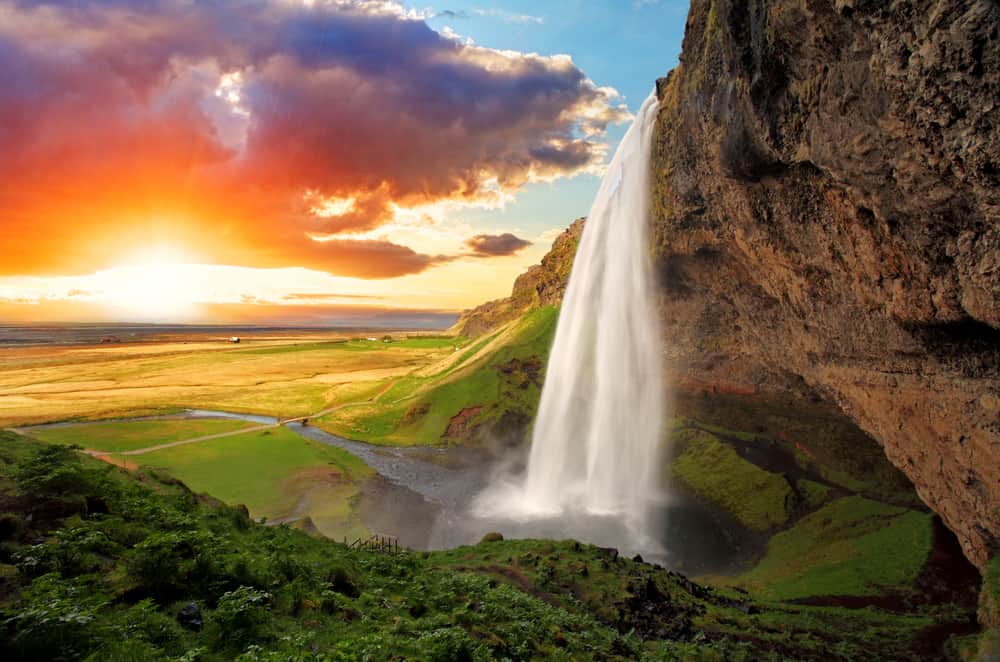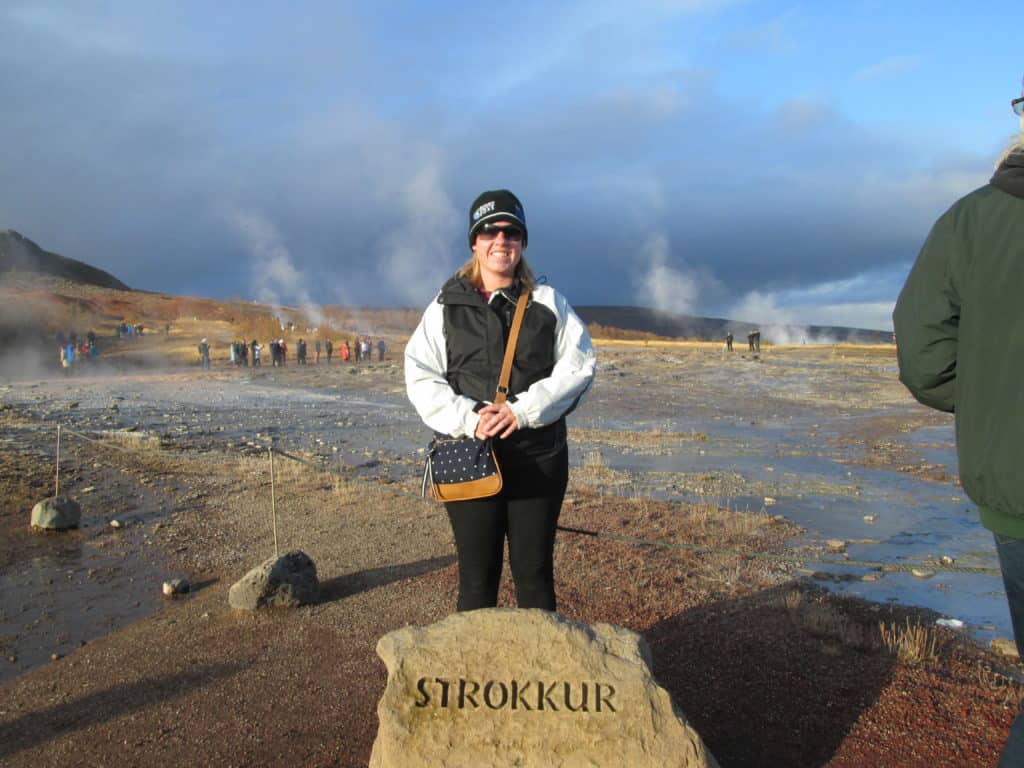How to Visit Iceland on a Budget
THIS POST MAY CONTAIN AFFILIATE LINKS. MEANING I RECEIVE COMMISSIONS FOR PURCHASES MADE THROUGH THOSE LINKS, AT NO COST TO YOU. PLEASE READ MY DISCLOSURE FOR MORE INFO.
Iceland is one of the most expensive countries in the world but if you’re looking to visit Iceland on a budget, it’s absolutely doable. There are plenty of things you can do to keep your costs down.
By being creative and planning ahead, it’s possible to visit this amazing country without spending a fortune. Here are some tips for visiting this beautiful country without breaking the bank.
Travel to Iceland is Extremely affordable
Travel to this beautiful country is extremely affordable, and can even be added on as an extended layover. This means that you can save money by flying into or through Keflavik International Airport.
Combine Accommodations and transportation with a Campervan
Camping via a campervan is a great way to save money while traveling in Iceland – there are plenty of campsites throughout the country, and many of them offer stunning views
This can be a great way to save money on accommodation and transportation costs. You’ll have access to everything you need when you stay in a camper van, the internet in the van was especially helpful so I didn’t have to worry about using my phone’s data plan.
If you do plan to travel by campervan then I highly recommend you pack earplugs. At night when you’re trying to sleep and the wind kicks up against the van it can be very loud.
Purchase Alchohol at Duty Free before Leaving the Airport
If you plan on drinking while in Iceland, it’s a good idea to purchase your alcohol at the duty-free shop before leaving the airport. Alcohol is very expensive in Iceland, so this can help you save a lot of money.
Travel in the Off Season
As mentioned earlier, travel to Iceland is much cheaper during the off-season, like October or April. Prices for hotels, restaurants, and transportation tend to be much lower during this time. If you’re flexible with your travel dates, consider visiting Iceland during the winter or spring months.
As a bonus, you’ll have a shot at seeing the northern lights at night while still having plenty of daylight for other activities.
Skip the Super Touristy Sites like the Blue Lagoon
The Blue Lagoon is one of the most popular tourist attractions in Iceland, but it’s also one of the most expensive. If you’re on a budget, consider skipping this site and instead exploring some of the free natural hot springs that can be found throughout the country.
If you really want to Blue Lagoon experience, there are other hot springs and geothermal pools that aren’t as expensive. Including a few on what’s known as the golden circle.
Make Your Own Food
Eating out can be expensive in Iceland, so another great way to save money is by cooking your own meals. If you’re staying in a campervan, this should be no problem. There are also many grocery stores located throughout the country where you can purchase food items.
Skip buying bottled water and use fresh water instead
Bottled water is expensive in Iceland, so it’s best to just drink tap water or even from the hose at campsites. The tap water in Iceland is some of the cleanest in the world, so you don’t have to worry about getting sick from drinking it.
Enjoy Free Activities
There are many free things to do in Iceland, such as hiking and exploring waterfalls and glaciers.
- National parks
- waterfalls
- glaciers
- hiking
- photography
- geisers
These are only a few ideas, but there are many more ways to enjoy Iceland on a budget. Do some research ahead of time and you’re sure to find lots of things that will interest you.

Spend extra time in Reykjavik
If you find yourself having to turn in your campervan early and don’t want to hang out at the airport all day while you wait for your flight, you can grab a bus to nearby Reykjavik, rent a locker to store your luggage and go explore the city.
Reykjavik is the capital of Iceland and is by far the largest city in the country. Although it can be expensive, there are many things to see and do in Reykjavik.
Safety Tips
Although Iceland is a safe country, there are still some things to be aware of. Here are a few safety tips to keep in mind:
Pay attention to signs, especially those around the ocean, they are there for a reason.
One of the things certain beaches in Iceland are known for are sneaker waves, so-called because they really sneak up on you, don’t turn you back to the waves.
It can also get severe winds, especially when you’re up high on a cliff, be smart and avoid getting too close to the edge.
Finally, if there are areas blocked off at national parks, stay out, some of the hot springs can have waters at boiling temperature and you can risk serious burns if you stray off the path.
If you follow these safety tips, you should have no problem enjoying your trip to Iceland.
Final Tips
Here are a few final tips to keep in mind when planning your trip to Iceland:
Start planning early and be flexible with your travel dates. This will help you find the best deals on flights and accommodations.
Research all of your options before making any decisions. There are many websites and travel blogs that can offer helpful information and advice.
Don’t be afraid to ask for help. The locals are generally very friendly and helpful, so don’t hesitate to ask for directions or recommendations.
No matter when you decide to visit Iceland, it is sure to be an amazing and memorable experience.
Have fun and enjoy your trip! Iceland is an amazing country with plenty of things to see and do.

Frequently Asked Questions
Still have quesitons about how to visit Iceland on a budget? We’ve answered the most common questions below!
Iceland is one of the most expensive countries in the world, so you should expect to spend a lot of money. However, there are ways to save money, such as cooking your own meals and staying in budget accommodation. For a three-day trip including airfare and the campervan, I spent around $1,200
Yes, Iceland is a very safe country. The crime rate is very low and there is little to no violent crime. However, you should always take precautions when traveling, such as not leaving your belongings unguarded in public areas.
Yes, you can use your cell phone in Iceland. However, you may want to buy a local SIM card, as roaming charges can be expensive. Alternatively, you can put your phone in “airplane” mode and only use it with wifi.
The best way to get around Iceland is by car or I highly recommend a campervan. This gives you the freedom to explore at your own pace and makes it easy to reach popular tourist destinations.
The currency in Iceland is the Icelandic krona (ISK). However, many places accept major credit cards, such as Visa and Mastercard. Keep in mind you may have to pay a foreign transaction fee. Plan to use a credit card that has zero foreign transaction fees to save money.
The best way to travel cheaply in Iceland is by camping. There are many campgrounds located throughout the country, so you will be able to find one that is close to your desired destination. Camping is a great way to save money on both accommodation and travel costs.
When packing for Iceland, be sure to pack appropriate clothing and gear for the time of year you are visiting. The weather can be unpredictable, so it is important to be prepared for all types of conditions. It is also a good idea to pack any essential items, such as a power adapter, as they may be difficult to find in Iceland. If you plan on camping, I recommend packing earplugs to help you sleep – the wind against a campervan or tent can be very loud at night.
The cheapest month to visit Iceland is October. This is due to the fact that the tourist season has ended and prices are lower than they are during the peak months of June, July, and August. However, the weather is still cold and you may not be able to see some of the attractions that are only open during the summer months.
You can see most of the major attractions in Iceland in 3-5 days. However, if you want to explore the country at a slower pace, you may want to spend 7-10 days. This will give you plenty of time to see everything that Iceland has to offer. I spent 3 days there and want to go back for 10 to do the entire ring road around the country.
You may need to take cash with you to Iceland, as not all places accept credit cards. It is a good idea to have some cash on hand, just in case. However, you should only exchange money at a reputable currency exchange office, as rates can be high at airport kiosks. Some places you may need to use cash include public toilets and campground amenities.
It is possible to travel around Iceland on a low budget. However, you may need to make some sacrifices, such as staying in cheaper accommodation like camping or renting a campervan. But if you are willing to do this, you can still have an amazing trip and see all that Iceland has to offer.
Related: London on a Budget: How to Enjoy a Week in London for Just $1,200



